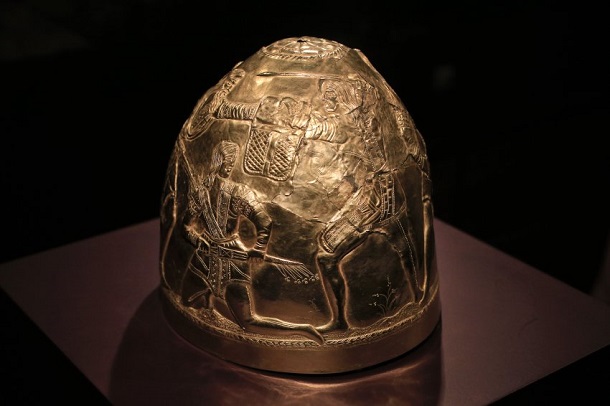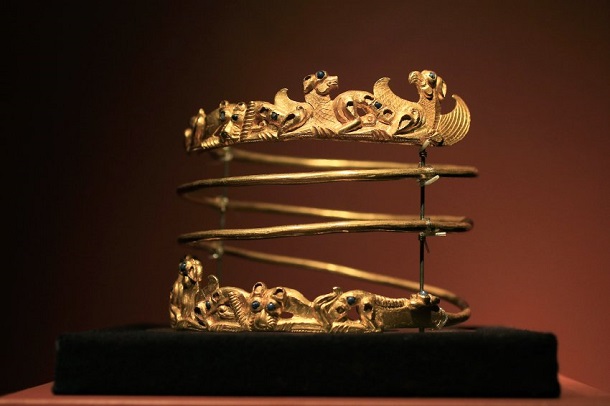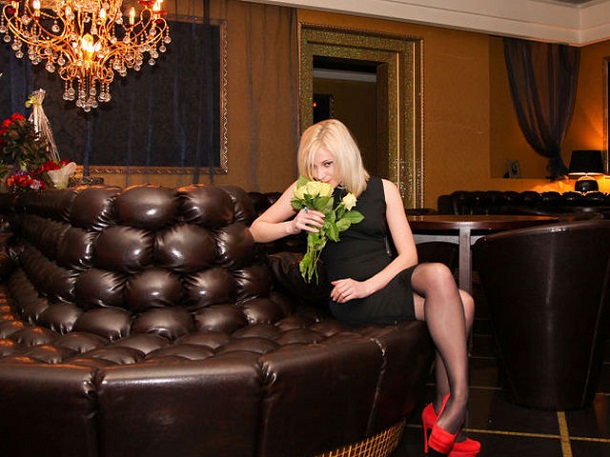A Dutch museum shows exhibits of gold Crimea. At the start of the show the peninsula belonged to the Ukraine, now it is annexed by Russia. Who to go to the treasure, when the exhibition ends in a few days?
A helmet of gold, adorned with forged contours of fighters. Gold-plated scabbards of swords, jewels, paint-boxes, coins, amulets. This 2000 year old treasures come from the Crimea, the controversial between Ukraine and Russia peninsula in the Black Sea. Currently she can be seen in the Netherlands – and now a live issue in the current crisis between Europe, Russia and Ukraine.
In early February, an exhibition on the Crimea opened, with many precious exhibits that come from the equestrian culture of the Scythians, the Allard Pierson Museum in Amsterdam. The objects are thousands of years old, jewelry boxes from China make it possible, for example, to reconstruct early trade routes of the Silk Road. ‘ve Never
Ukraine borrowed so many exhibits, it says in the program accompanying the exhibition. When they opened, belonged to the peninsula and thus the gold treasure even the Ukraine. A few weeks later Russian soldiers occupied the Crimea, a referendum was held, finally, Moscow verleibte the peninsula officially.
And the gold treasure? Include the objects now continue the Ukraine or Russia is the new owner? On August 31, the exhibition ends – the museum-makers do not know is if they give back the gold to Kiev or Moscow. Lawyers try to solve the thorny problem of global political explosiveness.
Gold In Crimea:”A legally complicated case”
One might think that the Dutch are yet to return the gold simply there, from where they got it. However: “How it is not,” says Yasha Lange of the University of Amsterdam, to the Archaeological Museum. The pieces are on loan from museums five, four of them in the Crimea. The Ukrainian government maintains that the objects of the Crimea were state property. You therefore need to be sent to Kiev after the peninsula has split off. “After Ukrainian considers a return to the museums would mean in the Crimea, that the pieces suddenly fall into Russian hands,” says Lange.
“A legally complicated case,” says Lange. And indeed, the procedural situation. As usual, the museum in Amsterdam previously concluded contracts with the museums that have made the loan. What was regulated precisely to’m not saying Lange. Of these contracts and the Ukrainian law, however, depends on who get the gold of the Crimea, says Inge van der fleece, professor of art and constitutional law at the University of Amsterdam. “It may be that the museums have signed the Agreement on behalf of the State, then the pieces probably go to the state.” It could also be that an object must be returned to the owner – and that this right in any case outweighs any contract concluded between the museums.
The museums in the Crimea are convinced that they have to get the objects themselves – even if the institutions were now geographically to Russia. One of the lenders is the Central Museum of Taurien in Simeropol in the Crimea. Its director Andrey Malgin says the contract with the Amsterdammers provides that the objects fell at his museum. The problem is just that there are two owners. “Our position is that museum-going State-owned property.” The items were found in the Crimea, were part of the cultural heritage of the region. “They have nothing to do with the Ukrainian territory.” Therefore, they must be returned to the owner direct: his museum.
State’s rights activist Van der fleece emphasizes that one must delve in order to clarify the local law – mind you: in the Ukraine. Because the Dutch government has not recognized the secession of Crimea, it is therefore remain bound by agreements with Ukraine. The Amsterdam Museum has now commissioned several legal experts. The Dutch Foreign Ministry said to have been turned on.
Russia, self-appointed protector of the Crimea, should in turn have instructed lawyers. They would represent the interests of Moscow, should it come to a trial, the RussianCulture Minister Vladimir Medinsky said, according to Russian media in early July. “I hope that our partners in the Netherlands do not use the thing for petty politics, but look at it from a legal standpoint.” Fedor Voronin, Cultural Attache of the Russian Embassy in The Hague, will not comment on the reports. Just this: “The negotiations are at the level of the museum, not the messages.”
Meanwhile, all sides seem to work on a silent solution to the problem. In the next few days the Allard Pierson Museum will explain what to do with the gold treasures of the Crimea. So far it was before. Actually, the show was supposed to end in May, but then popped the question of the rightful owners of the exhibits on. The pragmatic Dutchman then decided simply to extend the exhibition.
[adrotate group=”14″]



